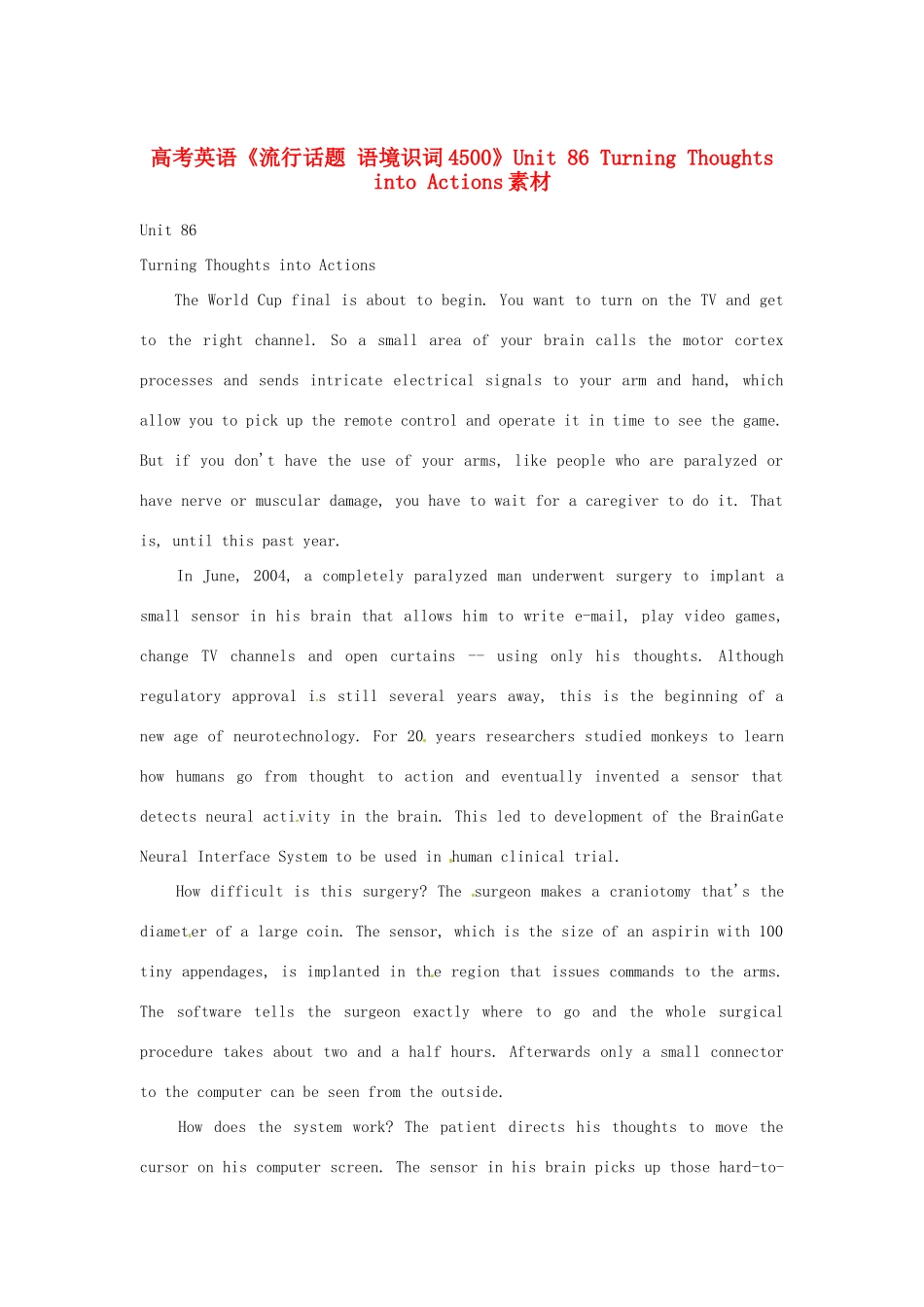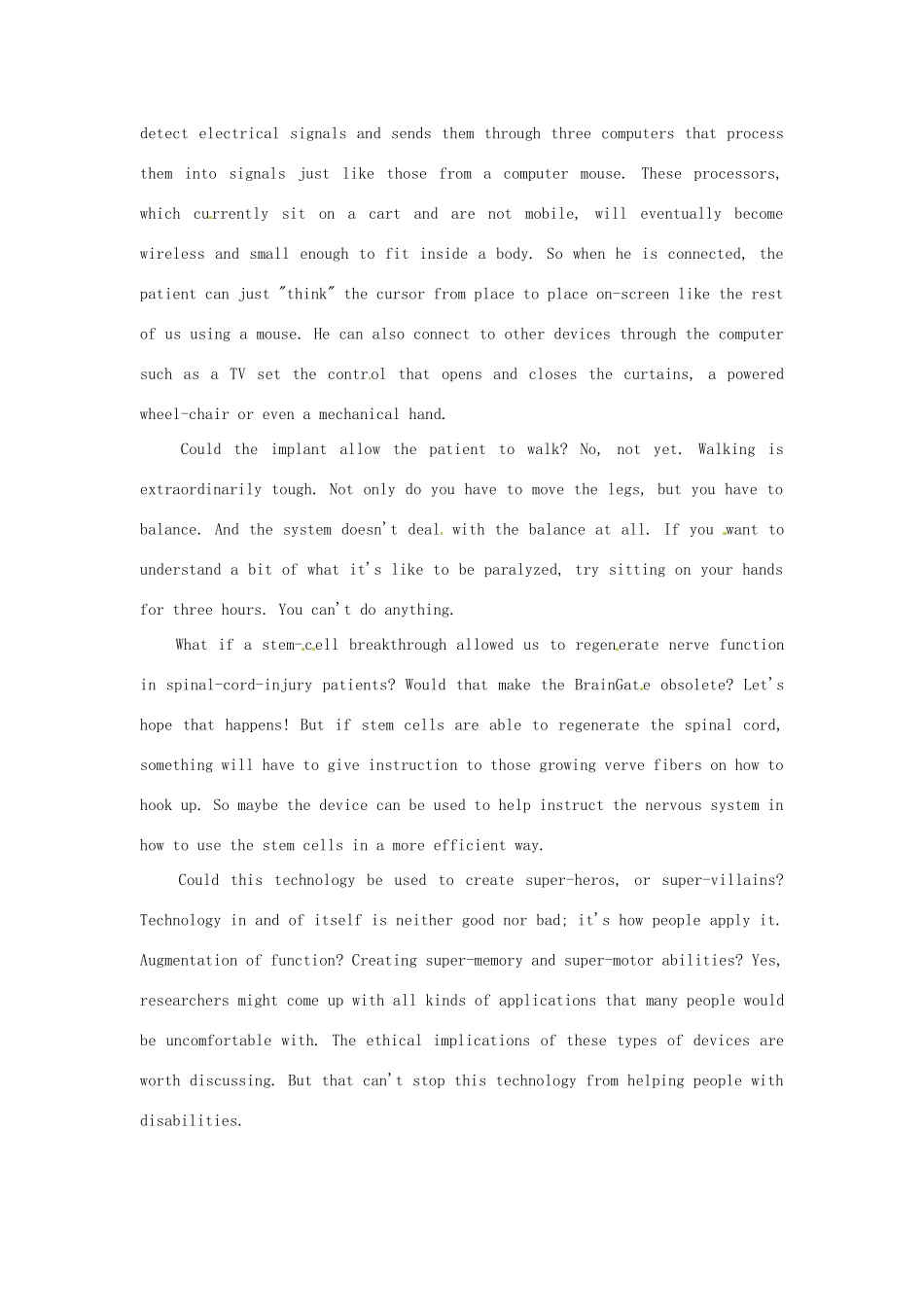高考英语《流行话题 语境识词 4500》Unit 86 Turning Thoughts into Actions 素材Unit 86Turning Thoughts into Actions The World Cup final is about to begin. You want to turn on the TV and get to the right channel. So a small area of your brain calls the motor cortex processes and sends intricate electrical signals to your arm and hand, which allow you to pick up the remote control and operate it in time to see the game. But if you don't have the use of your arms, like people who are paralyzed or have nerve or muscular damage, you have to wait for a caregiver to do it. That is, until this past year. In June, 2004, a completely paralyzed man underwent surgery to implant a small sensor in his brain that allows him to write e-mail, play video games, change TV channels and open curtains -- using only his thoughts. Although regulatory approval is still several years away, this is the beginning of a new age of neurotechnology. For 20 years researchers studied monkeys to learn how humans go from thought to action and eventually invented a sensor that detects neural activity in the brain. This led to development of the BrainGate Neural Interface System to be used in human clinical trial. How difficult is this surgery? The surgeon makes a craniotomy that's the diameter of a large coin. The sensor, which is the size of an aspirin with 100 tiny appendages, is implanted in the region that issues commands to the arms. The software tells the surgeon exactly where to go and the whole surgical procedure takes about two and a half hours. Afterwards only a small connector to the computer can be seen from the outside. How does the system work? The patient directs his thoughts to move the cursor...

